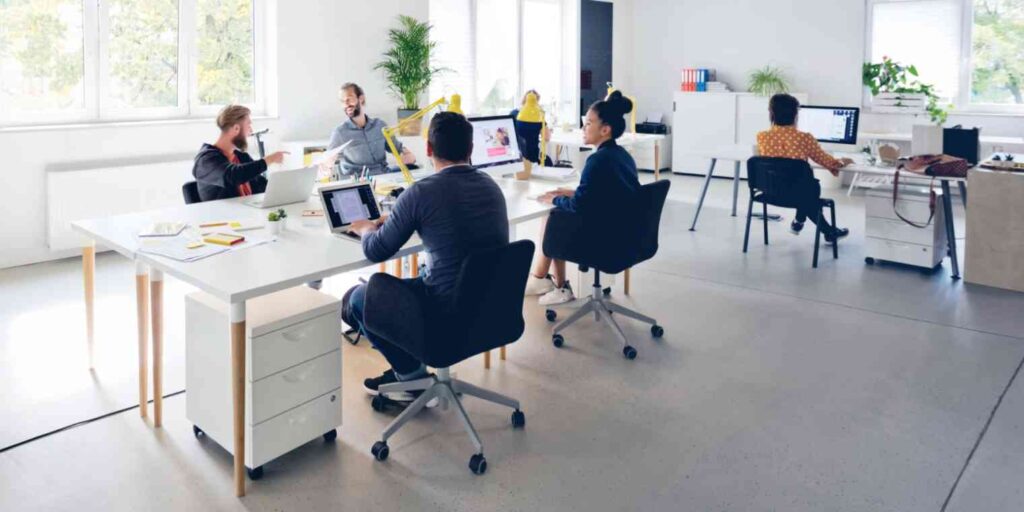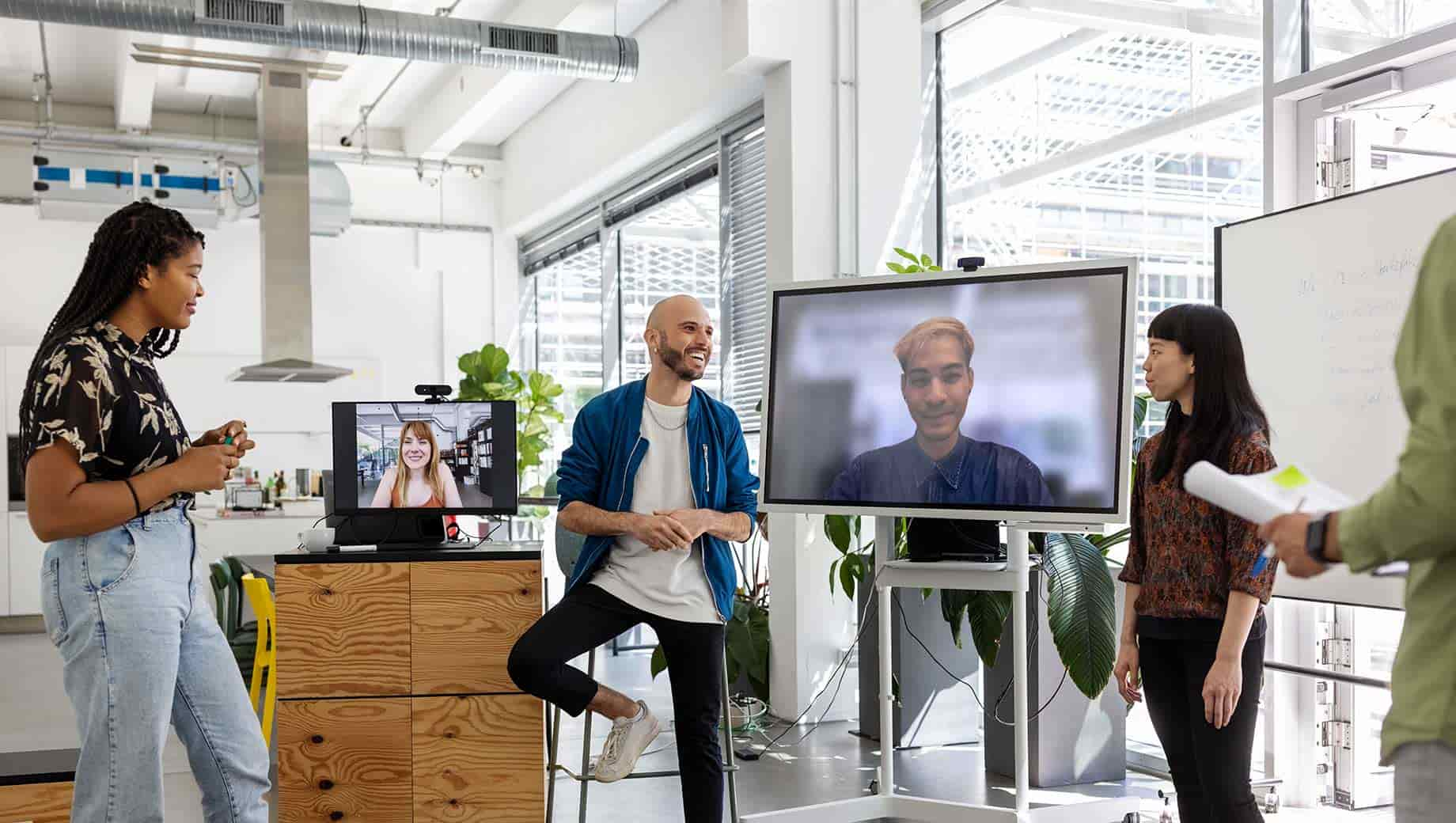The Remote Effect: Branding and Marketing the New Work Place.
How will people work and live?
That’s the big question post-pandemic. Remote working with Zoom, email, Slack, and more allows almost half of the U.S. remote-capable workforce to work at home at least part of the time. What does this mean for urban centers and downtowns that depend on being the center of the working world? The ongoing discussions about people going back to the office continue with some urgency. Occupancy rates for office space in downtown Manhattan, the Chicago Loop, and Downtown SF remain well below pre-pandemic levels. Where’s this all really going?
Hybrid work has increased in 2022 (from 42% in February to 49% in June) and is expected to further increase to 55% of remote-capable workers by the end of 2022 and beyond.
– Gallup, August, 2022
Forget the Personal Cubical – The Full-Time Office Worker is Gone.
Work at home? Work in the office? A combination? You can’t generalize what people will do. People and workers cover a broad range of lifestyle habits. And these lifestyles are actually networks driven by age and connection. It’s now clear no one will commute to work 5 days a week any longer. Why? The future is two to three days a week in the office; for many, remote work is full-time. This is not a disaster, however; it’s a dramatic shift in the dynamics of work that will allow amazing shifts in lifestyle, where people live, work and play. For the urban centers, this necessarily means a true reinvention.
Lifestyle, Age, and Connections – How to Bring People To Work.
You can’t treat everyone the same. There are so many factors that weigh in that you have to look closely at patterns and, yes, customer journeys. Think about it. You’re 37 and married and now have two kids. So much of your life is moving kids to school, from school, and events. You’re connected to other parents and friends and family with similar lifestyles. Working from home for a substantial part of the week makes a difference because of time and these network connections.

Younger single workers frequently have roommates and working from home can be a crowded uninspiring life. Your network is out in the world. It’s at work and hangouts and entertainment venues after work. It’s about connections, constant social interactions and multiple networks. It’s all about building relationships and perhaps looking for a future partner.
You thrive in a busy world and don’t want to be in one location. Now there are many variations on this and age, your network, and having kids all have an effect.
Is the Downtown Office Dead? Marketing to a New Flexible Office.
Commercial property owners are thinking long and hard about the permanence of workers and tenants in their office spaces. Work patterns are now shifting because of this hybrid office work environment. Will there be anyone willing to sign a 5-year lease anymore? Does it even make sense to commit to a specific space? Perhaps not but it doesn’t mean that office space and urban centers are dead. The new office is a hybrid, flexible environment that has a focus on teams working together implying creative and productive spaces.
Think of these new offices as dynamic meeting and creative spaces that bring teams together and build company culture.
The value of in-person meetings is about the dynamics of connection: creativity, personal interaction, and building a company culture based on trust. It’s much harder to do this when you can’t really connect in person. If anything, the pandemic and hybrid work has put a bigger focus and higher value on actual human interaction in teams.
Transforming The Urban Center to A Place of Connections and Experiences.
The real future of offices, urban centers, and downtowns is in living, working, and connecting flexibly, with more offices that are smaller and more flexible, with more of a mix of meeting rooms, conferencing centers, and individual casual workspaces that can be used by more than one person. There will be a trend toward more mixed-use environments, with more residential options providing needed vitality and a more consistent customer base for retail. There will be office buildings fully or partially converted to residential use.
The urban center needs to be marketed as the creative hub where people can work, live and play with amenities that make it more dynamic than working from home.
More businesses using less space may mean a shift into a range of work habits and office uses connected to lifestyle needs. Being close to both a gym and dry cleaners and a great restaurant district could make all the difference for workers who live nearby. Property owners need to think more about creating life and attractive retail in their area beyond just Class-A office space.
